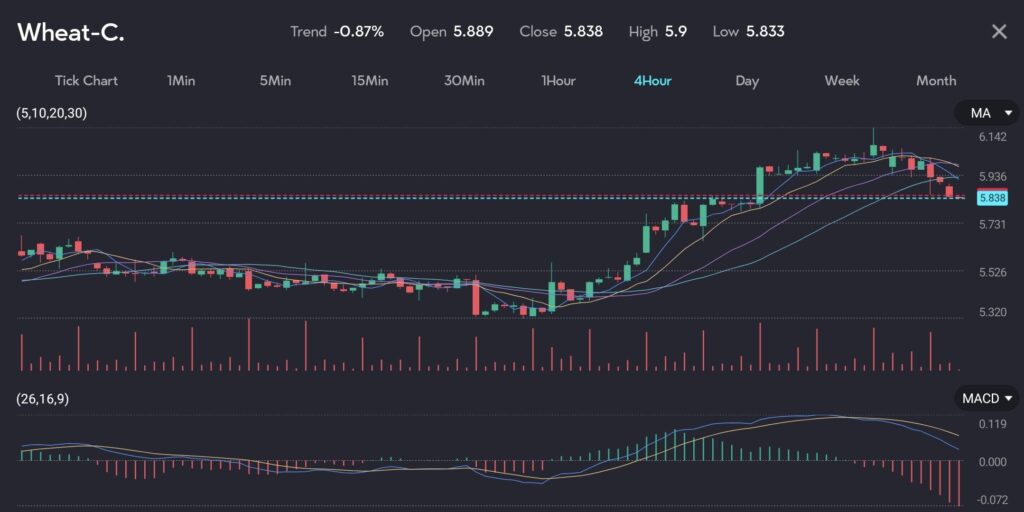30th April 2024
Chicago wheat futures continued to decline on Tuesday, dropping 0.4% to $6.06 a bushel by 0034 GMT. This move follows a significant 2% decrease on Monday, moving away from last week’s four-month high of $6.33-1/2 a bushel, which was the highest since December 29.

SEE: Wheat futures experience a downward trend on the VT Markets app.
The recent forecast for rain in critical Russian wheat-growing areas has somewhat alleviated global supply concerns, leading to a cooling of prices from recent spikes.
Soybeans and Corn See Price Adjustments
Similar to wheat, CBOT soybeans and corn experienced downward adjustments in their futures prices. Soybeans were down 0.4% at $11.77-1/4 a bushel, while corn fell slightly by 0.1% to $4.48-3/4 a bushel. These movements reflect an ongoing perception of ample supply in the global market, influenced by strong production forecasts from South America.
Speculative investors have reacted to the anticipated supply surpluses by building large bearish positions in all three commodities, which have led to their prices reaching the lowest levels since 2020. Despite a seven-day gain streak fueled by concerns over hot and dry weather affecting Russian yields, the recent easing of weather worries has shifted market dynamics.
Global Wheat Supply and Demand
Russia’s status as the world’s largest wheat exporter places significant weight on its crop conditions in determining global supply expectations. However, dry conditions persist in parts of the United States, maintaining a degree of caution among traders. In contrast, Europe’s harvest projections have been lowered due to wet conditions, highlighting the diverse climatic impacts on global wheat production.
The U.S. Department of Agriculture (USDA) reported that about 30% of the U.S. winter wheat crop was in drought-affected areas as of April 23. Moreover, a recent USDA crop progress report indicated a slight decline in crop conditions, with 49% of the U.S. winter wheat crop rated good-to-excellent, a drop from the previous week.
Soybean Strikes
In the soybean sector, recent price support came from a strike initiated by Argentina’s SOEA oilseed workers’ union against a labor reform bill.
Despite this, the overall pressure from competitively priced South American soybeans continues to suppress Chicago futures prices. Argentina’s soybean production is expected to more than double this year to around 50 million metric tons.
The recent fluctuations in wheat, soybean, and corn prices underscore the importance of staying informed and agile in response to new data and market shifts. If you’re looking to capitalise on these market movements, the time to act is now.
Start trading today. Click here to open a live account.









